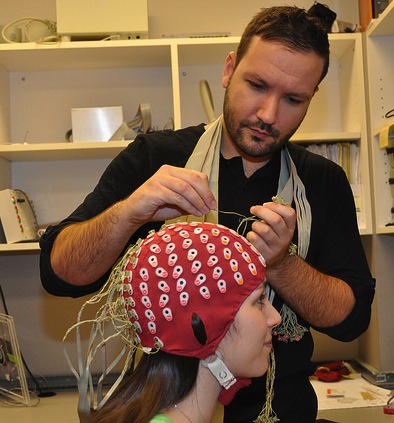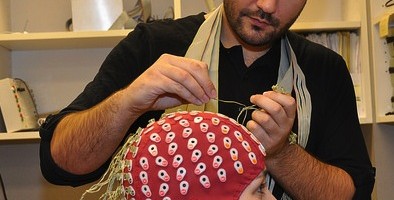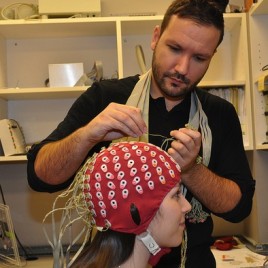
Researchers at Simon Fraser University have shown that EEGs can be used to detect and study the activity of neural circuits that suppress our tendency to get distracted. (Photo credit: Simon Fraser University Public Affairs and Media Relations)
Researchers have used EEGs (electoencephalogram) to show that a newly discovered type of neural process that works to overcome a distraction. When your gaze shifts to follow a distraction, neural circuits in your brain gives off signals that can be detected during an EEG.
The discovery could help develop new strategies to avoid distracted driving or offer insight into attention deficit disorders.
Original research paper published in the Journal of Neuroscience on April 16, 2014.
Names and affiliations of selected authors


